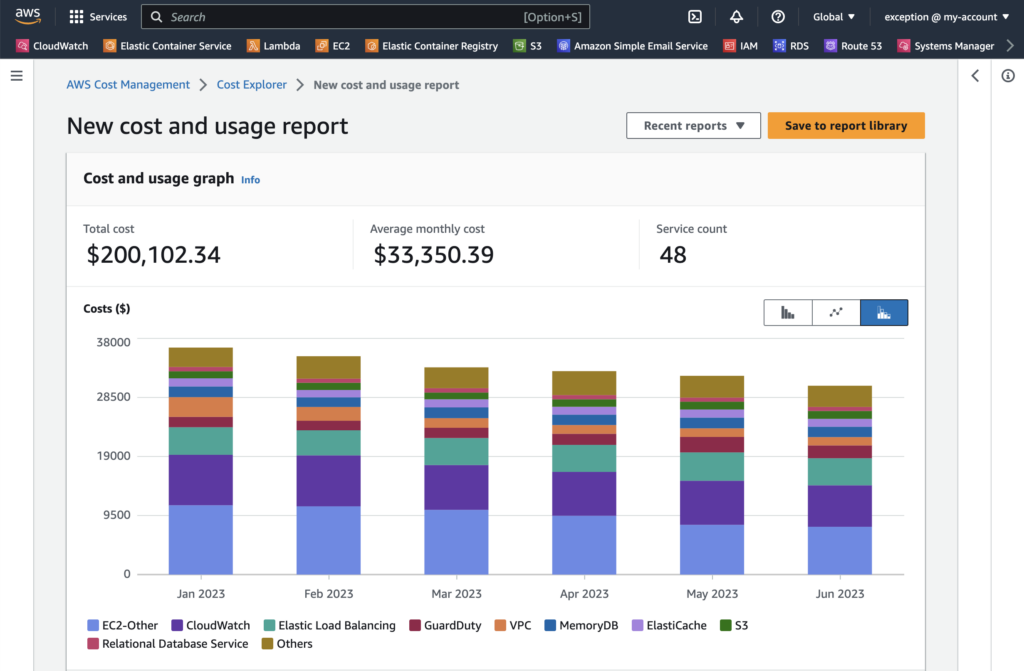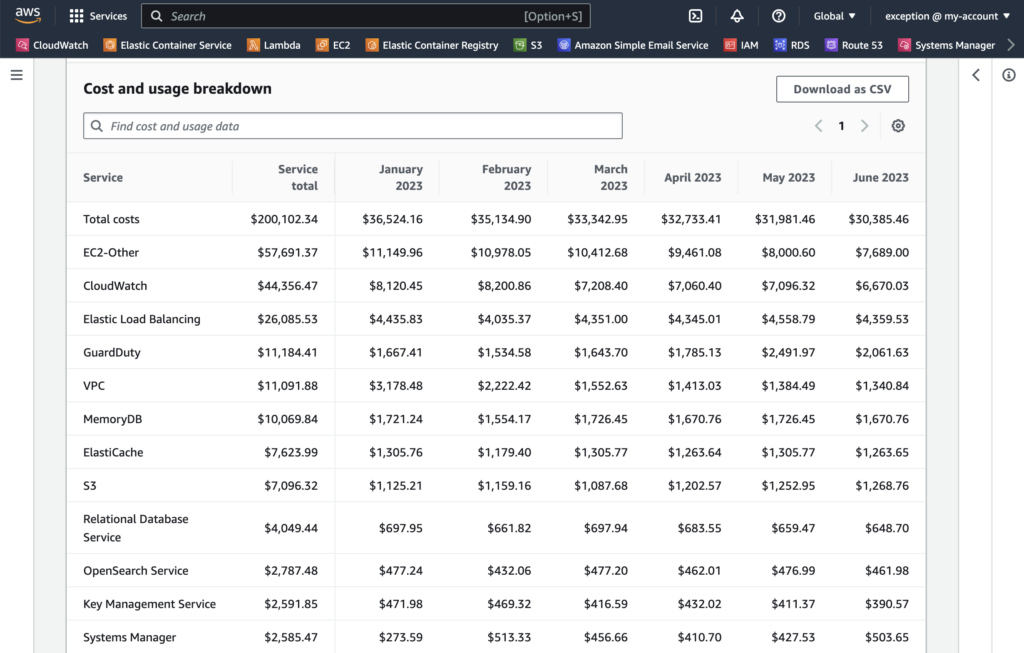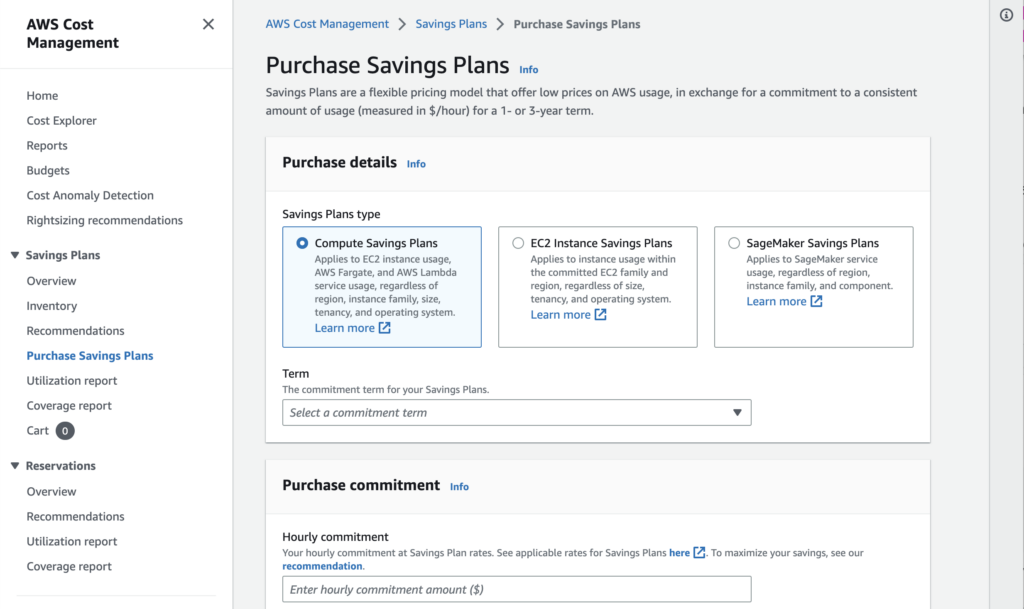AWS Cost Optimization: Strategies for Saving on Cloud Expenses
Many businesses rely heavily on cloud services to store data, host applications, and run various computing tasks. AWS is a popular choice in this realm, offering an extensive suite of cloud services designed to support different needs. However, the flexibility and scalability that make cloud computing so attractive can also lead to increased costs. That’s where AWS cost optimization comes in.
Cloud Computing Costs
In the realm of cloud computing, understanding cost dynamics is crucial. The costs associated with cloud computing are fundamentally based on the resources used. These costs can be further split into three primary categories: storage, compute power, and data transfer. Let’s take a closer look at each of them:
Storage
Storage refers to the total amount of data storage you use on AWS. Different services offer different types of storage. For example, Amazon S3 for object storage, EBS for block storage, and Glacier for long-term archive storage. Each comes with its own pricing model, often charged per gigabyte stored per month.
Compute Power
Compute power pertains to the capacity of processing power used for running applications and services. AWS offers a variety of instances (virtual servers) with different CPU, memory, storage, and networking capacity. The cost of these instances varies based on their specifications and the pricing model chosen. Pricing models are On-Demand, Reserved, Spot, and Savings Plans.
Data Transfer
Data transfer involves costs associated with the transfer of data both within AWS services and to external internet locations. While inbound data transfer is typically free, outbound data transfers (especially to the internet or across regions) incur costs.

AWS operates on a pay-as-you-go model, meaning users pay for the resources they use. This flexibility enables you to scale resources up or down as needed. While the pricing model offers excellent flexibility, it can lead to unexpectedly high costs if usage is not effectively managed. That’s why a deep understanding of these costs is the first step towards optimizing them. In the following sections, we will explore strategies for cost optimization. We will try to help you get the most value from your AWS investment.
Analyzing cloud costs involves several steps and requires the use of certain tools. These tools can help to understand usage patterns and identify areas where savings can be made. Here’s how you can do it:
Understand Your Usage
The first step to analyzing cloud costs is to understand your usage. How much compute power are you using? Do you need so much storage? Where is all the data going? All these contribute to your overall cloud costs.
Use AWS Cost Management Tools
AWS provides several tools to help you analyze your costs:
- AWS Cost Explorer: This tool provides an interface for you to view and analyze your costs and usage. You can view data up to the last 13 months, forecast how much you’re likely to spend for the next three months, and get recommendations for cost-saving opportunities.
- AWS Budgets: This service lets you set custom cost and usage budgets that alert you when your costs or usage exceed (or are forecasted to exceed) your budgeted amount.
- AWS Cost and Usage Report: This report contains the most comprehensive set of cost and usage data available, including additional metadata about AWS services, pricing, and reservations (e.g., Amazon EC2 Reserved Instances).
Break Down Costs By Service
AWS bills can be complex, with charges for different services bundled together. Breaking down costs by service can help you see where your money is going. Are you spending a lot on EC2 instances? Or is S3 storage your main cost driver? Knowing this can help you target your cost optimization efforts.

Identify Unused or Underutilized Resources
Unused or underutilized resources can lead to unnecessary costs. For instance, you might be paying for an EC2 instance that’s rarely used, or for EBS storage that’s mostly empty. Regularly reviewing your usage and shutting down or resizing unnecessary resources can lead to significant savings.
Analyze Cost Trends Over Time
Are your costs going up, going down, or staying the same? Understanding cost trends can help you forecast future costs and identify any unusual spikes in usage, which might indicate a problem.
Understand Pricing Models
AWS offers different pricing models, like On-Demand, Reserved Instances, Spot Instances, and Savings Plans. Understanding these models can help you choose the most cost-effective options for your needs.
Remember, cost analysis should be a regular part of your cloud management practices, not a one-time task. Regularly reviewing and understanding your AWS costs will help you better manage your resources and save money over time.
The Importance of Cost Optimization
Cost optimization refers to the process of reducing your overall AWS expenditure without compromising performance or efficiency. It’s about getting the most value for your money and ensuring that you’re not paying for resources that you don’t need. By optimizing costs, companies can reduce their operational expenses, maximize efficiency, and allocate more funds towards innovation and growth.
In the ever-evolving landscape of cloud computing, cost optimization plays a pivotal role. It is not just about reducing the bottom line but also about making the most of your cloud investments. There are several reasons why cost optimization is critical in the AWS ecosystem:
Efficient Resource Utilization
Optimizing costs ensures that you are making the most out of the resources you’ve procured. Often, companies end up overprovisioning resources to avoid performance issues. However, this leads to increased costs due to unused or underutilized resources. Through effective cost optimization, companies can align resource allocation with actual needs, thus avoiding waste and improving efficiency.
Improved Budgeting and Forecasting
Cost optimization provides a clear understanding of your cloud spend, helping you better predict future expenses and plan your budget accordingly. With a precise understanding of how costs are accrued and how resources are used, you can more accurately forecast future expenses.
Maximizing Value
AWS offers numerous services, each with its pricing structure. Cost optimization enables businesses to select the most cost-effective services for their needs, ensuring they get the maximum value from AWS.
Enabling Innovation and Growth
Cost savings from optimization can be redirected towards innovation and growth initiatives. Instead of overspending on maintaining the current infrastructure, savings can fuel new projects, R&D, and other business goals.
Creating a Cost-Conscious Culture
By focusing on cost optimization, organizations encourage a cost-conscious culture. Teams consider the financial impact of their decisions and choose solutions that not only meet technical requirements but also make the most financial sense.
In a nutshell, AWS cost optimization is not merely a strategy for cost reduction—it’s a strategic approach to efficient cloud management. It allows businesses to get the most value from their AWS services, enabling them to drive innovation while keeping costs in check. A well-executed cost optimization strategy can be a game-changer, giving businesses the ability to pivot quickly, scale efficiently, and operate with maximum cost-effectiveness.
AWS Pricing Models
Amazon Web Services (AWS) offers several pricing models for its services, each tailored to accommodate different needs and usage patterns. These pricing models are a key component in your AWS cost management and optimization strategy. Let’s dive into the details:
On-Demand Pricing
On-Demand instances let you pay for compute capacity by the hour or by the second, depending on which instances you run. This model requires no upfront payment and no long-term commitments, which makes it appealing for short-term, spiky, or unpredictable workloads that cannot be interrupted.
On-Demand pricing gives you flexibility but it’s typically the most expensive option. To optimize costs, it’s best used for development and test environments, or for applications with unpredictable workloads.
Reserved Instances (RI) Pricing
Reserved Instances provide you with a significant discount (up to 75%) compared to On-Demand instance pricing. In exchange, you commit to use a specific instance type for a term from 1 to 3 years.
RIs can be used for applications with steady-state or predictable usage and can provide substantial savings. However, you must plan carefully as you’re committing to the contract duration, and changing or cancelling can result in fees.
Spot Instances Pricing
Spot Instances allow you to bid on spare Amazon EC2 computing capacity. This pricing model is great for workloads with flexible start and end times, or that can withstand interruptions. Spot Instances offer significant savings over On-Demand prices (up to 90%).
However, Spot Instances are subject to availability and can be interrupted with two minutes of notification when AWS needs the capacity back. Hence, they’re best for fault-tolerant applications, such as big data, containerized workloads, CI/CD, web servers, high-performance computing (HPC), and test & development workloads.
Savings Plans Pricing
Savings Plans are a flexible pricing model that offers low prices on EC2 and Fargate usage, in exchange for a commitment to a consistent amount of usage (measured in $/hour) for a 1 or 3-year term. The savings can be up to 72%, similar to RIs, but with more flexibility.

Understanding these different pricing models can provide a strategic advantage in managing your AWS costs. By aligning your application requirements and usage patterns with the appropriate pricing model, you can optimize your AWS costs effectively and efficiently.
AWS Cost Optimization Strategies
Navigating the AWS cost landscape can be a complex task, but with the right strategies, organizations can effectively optimize their cloud expenditure. Here are some key strategies for AWS cost optimization:
Right-Sizing Services
Right-sizing involves matching your resource allocation with your actual usage. AWS offers a wide variety of instance types and sizes, each tailored for specific use cases. It’s important to choose the ones that fit your needs and avoid over-provisioning. Regularly monitoring usage and adjusting resources accordingly is a crucial part of right-sizing.
Increasing Elasticity
Elasticity is one of the key benefits of the cloud – the ability to easily scale resources up and down based on demand. By automating scaling, you can ensure you’re using just what you need. This approach can lead to significant savings, particularly for workloads with variable demand.
Selecting Appropriate Storage Classes
AWS offers several storage classes in Amazon S3, each with different pricing, availability, and durability characteristics. By matching your storage use with the appropriate storage class (for example, using S3 Infrequent Access or Glacier for less frequently accessed data), you can significantly reduce storage costs.
Leveraging Pricing Models
As discussed earlier, AWS offers several pricing models, such as On-Demand, Reserved Instances (RI), Spot Instances, and Savings Plans. By understanding and effectively utilizing these models based on your workload characteristics, you can optimize your costs.
Deleting Unused Resources
Unused or underutilized resources can quickly inflate costs. Regularly identify and remove unattached EBS volumes, idle load balancers, and outdated snapshots. Also, stop or terminate idle EC2 instances.
Making Use of Cost Management Tools
AWS provides a number of cost management tools, like AWS Cost Explorer, AWS Budgets, and Cost and Usage Reports, which you can leverage to gain insights into your expenditure and find opportunities for savings.
Designing for Cost
When architecting your solutions, consider cost as one of the factors. Use managed and serverless services where possible to reduce operational overhead, and choose regions with lower costs when acceptable for your application.
Continuous Monitoring and Optimization
Optimization is not a one-time activity. Continuously monitor your costs, stay updated with new AWS features and pricing options, and keep refining your usage.
Adopting these strategies can result in substantial savings and make your cloud journey more cost-effective. It’s essential to remember that each application may need a unique combination of these strategies, and effective cost optimization often requires ongoing effort and attention.
Optimizing With Devfabrika
At Devfabrika, we understand that AWS cost optimization is not a one-size-fits-all solution, and it can often be a complex process. That’s why we offer expert AWS cost optimization services tailored to your unique business needs.
Our team of skilled cloud experts works closely with you to understand your usage patterns and business goals. Based on this, we recommend and implement the most effective cost optimization strategies to ensure you’re getting the most value from your AWS investment. We leverage AWS’s tools, apply the best practices, and keep up with the latest AWS offerings to provide the most up-to-date and impactful solutions.
Whether you’re new to AWS or already have a sizable cloud presence, we can help you gain more control over your AWS costs, reduce waste, and maximize efficiency. We not only assist in implementing cost-saving measures but also provide regular monitoring and reviews to ensure continuous optimization over time.
In the coming weeks, we’ll delve deeper into each of these strategies, providing you with detailed guides, practical tips, and case studies to help you implement them effectively. Stay tuned, and embark on this journey of AWS cost optimization with us to enhance your operational efficiency and create a cost-conscious culture in your organization.
Remember, AWS cost optimization is an ongoing journey, not a destination. And with Devfabrika, you have a reliable partner for this journey. Get in touch with us to start optimizing your AWS costs today.
What’s Coming Up
In the coming weeks, we’re going to take a deeper dive into each of these AWS cost optimization strategies. Our aim is to provide you with practical, step-by-step guides that you can implement in your own AWS environments. We’ll demystify the complexity of AWS pricing and show you how to make the most of the tools and options at your disposal.
Firstly we will be focusing on ‘right-sizing’ your services, demonstrating how to effectively match your resource allocation with your actual usage. We’ll then move on to exploring how ‘elasticity’ can help you automatically adjust resources based on demand.
Our discussion will also cover the crucial process of selecting appropriate storage classes and leveraging different pricing models to suit your unique needs. Furthermore, we’ll highlight how you can save by deleting unused resources, and we’ll provide guidance on how to use AWS’s cost management tools for optimal results.
Each blog post in this series will offer actionable advice, empowering you to make informed decisions about your cloud infrastructure and ultimately optimize your AWS costs. Whether you’re a small startup or a large enterprise, these strategies can help you get the most out of your AWS investment. So, stay tuned for a comprehensive exploration of AWS cost optimization.
